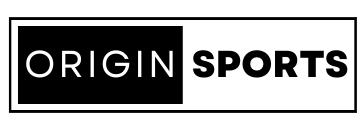The Manufacturing and Supply Chain of Nike Kits: A Detailed Insight with a Focus on Nike’s France 2024 Kit for the Euros
Nike, a global leader in sports apparel, is renowned for its innovative and high-quality products. The manufacturing and supply chain of Nike kits, particularly the France 2024 kit for the Euros, reflects the company’s commitment to design excellence, sustainability, and cutting-edge technology. This article provides a comprehensive overview of the technical processes of creating these kits, from raw material sourcing to final delivery.
1. Raw Material Sourcing
The foundation of Nike’s manufacturing process begins with the meticulous sourcing of raw materials. Nike prioritizes sustainability, focusing on high-quality, eco-friendly materials such as recycled polyester, organic cotton, and advanced synthetic fabrics. The recent radical shift in marketing strategy has seen a more ideological approach to sustainability and a shift from direct player sponsorship. Players like Neymar Jr. have moved on to join Puma after their contracts were either terminated or not renewed.
For the sourcing of the France 2024 kit, Nike utilized recycled polyester derived from plastic bottles, with the aim of reducing waste and minimizing environmental impact.
2. Material Processing and Fabric Production
Once sourced, the raw materials undergo processing to create high-performance fabrics. Recycled polyester is produced by cleaning, shredding, and melting plastic bottles into pellets, which are then spun into yarn. This yarn is woven or knitted into fabric using advanced techniques. Nike’s proprietary Dri-FIT technology is integrated into the fabric, ensuring moisture-wicking properties that keep athletes dry and comfortable during matches.
For the France 2024 kit, Nike employed its latest fabric innovation, Vaporknit. This technology enhances breathability, flexibility, and weight reduction, providing optimal performance during high-intensity matches.
3. Design and Prototyping
Nike’s design process is a blend of performance creativity and functionality. Their design team collaborates closely with some athletes to gather insights and feedback, ensuring the final product meets their needs. Using Computer-Aided Design (CAD) software, designers create digital prototypes of the France 2024 kit. These prototypes are then translated into physical samples, which undergo extensive testing for fit, comfort, and durability.
4. Cutting and Sewing
The manufacturing phase begins with the precision cutting of fabric into specific patterns using automated cutting machines. These patterns are meticulously sewn together using both automated and manual sewing techniques to ensure high quality. The France 2024 kit features intricate designs and team logos that are seamlessly integrated during this stage.
5. Quality Control
Quality control is paramount to Nike’s manufacturing process. Each kit undergoes multiple inspections to ensure adherence to design specifications and quality standards. Tests include checking for stitching accuracy, fabric integrity, colour consistency, and overall durability. Nike employs rigorous testing methods such as tensile strength tests, abrasion resistance tests, and real-world performance trials to ensure the France 2024 kit meets the highest standards.
6. Printing and Embroidery
Branding elements, including team logos, player numbers, and sponsor logos, are added through advanced printing and embroidery techniques. Nike uses high-precision screen printing, heat transfer, and sublimation to apply graphics that are both durable and vibrant. Embroidery machines add details with exceptional accuracy, giving the kits a premium finish.
7. Packaging and Distribution
Once the kits pass all quality checks, they are packaged using sustainable materials designed to protect the products during transit while minimizing environmental impact. Nike’s packaging solutions include recyclable and biodegradable materials.
The distribution phase involves a sophisticated logistics network to ensure timely delivery of the France 2024 kits to retail stores, online customers, and team officials worldwide. Nike employs advanced supply chain management systems to track inventory, manage orders, and optimize shipping routes. Strategically located warehouses facilitate efficient global distribution, supported by cutting-edge logistics software that ensures the smooth flow of goods.
8. Retail and Customer Engagement
Nike kits are available through various channels, including Nike retail stores, e-commerce platforms, and authorized retailers. The company leverages data analytics to understand customer preferences and manage inventory efficiently. Online platforms offer a seamless shopping experience with detailed product information, customization options, and swift delivery services.
9. Sustainability Initiatives
Nike is deeply committed to sustainability across its supply chain. The company aims to reduce its environmental footprint by using recycled materials, reducing water and energy consumption, and minimizing waste. Initiatives such as the Move to Zero campaign reflect Nike’s dedication to achieving a zero-carbon and zero-waste future. The France 2024 kit embodies these principles, showcasing Nike’s innovative approach to sustainable sportswear.
Design Analysis
The unique thing about France’s Home kit this year was the synergy between shirts, shorts and socks. The blue-white-red combo leaves a symphony that is contextually and conventionally a dissonance yet, it timeless and aesthetically appealing. The Home Kits shirt neck area is draped in a thin elastic V-neck band of the French national colours promoting a visual focal point that compliments the idea to expand the size of the cock-crest of the FFF badge. The Away borrowed inspiration from 1998’s horizontal lines and made them vertical. The shirt has a classy appeal to Parisian fashion, contrastingly, for athleticism purposes only, the away kit is not the most visually appealing on the field, and neither is it the unicorn in the pack. The Home kit’s shorts have the same national colour seam design at the fringes accentuating the whole Home kit design in a holistic manner. When it comes to the Away kit’s shorts, it is more of a complimentary alliance with the predominantly white shirt but it does not do much to court attention.
The manufacturing and supply chain of Nike kits, exemplified by the France 2024 kit capsule for the Euros, highlight the company’s dedication to quality, innovation, and sustainability. From the careful selection of raw materials to the delivery of the final product, each step is meticulously planned and executed to deliver superior performance and aesthetics. Through continuous improvement and advanced technologies, Nike remains at the forefront of the sportswear industry, setting benchmarks for efficiency, sustainability, and excellence. The anthem jackets, pre-match and post-match wears all were predominantly white or deep blue, following the tradition of Les Bleus over the years.
Chen Gilmor rates the France Home Kit a 7/10 and rates the away kit a 5/10 with design features, style, elements, overall quality, and supply chain indices being the metric core factors.






Leave a Reply